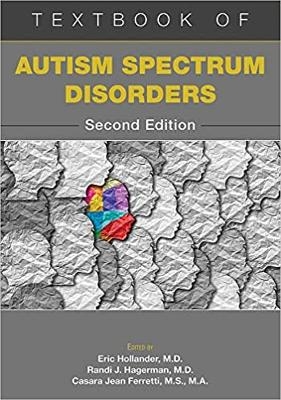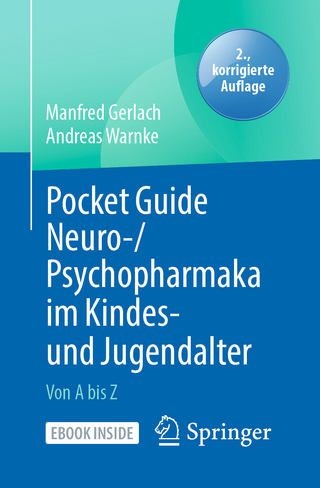
Textbook of Autism Spectrum Disorders
American Psychiatric Association Publishing (Verlag)
978-1-61537-304-8 (ISBN)
More than 40 years after the official recognition of infantile autism in DSM-III, numerous questions remain about autism spectrum disorder (ASD)—its possible causes, assessment, and most effective treatments.
This second edition of the Textbook of Autism Spectrum Disorders features contributions from dozens of experts as it reviews the latest research on these topics and more.
As ambitious in scope and exhaustive as the preceding edition, this guide is organized by sections that tackle:
• Assessment and evaluation, including recognizing the lower- and higher-order repetitive behaviors characteristic of ASD, as well as its comorbidities. Chapters also discuss the roles that racial and ethnic disparities, gender and sexual identities,and biomarkers and technology—including smart home devices and augmented reality technology—can play in assessment and evaluation.
• The possible causes of autism, from prenatal, perinatal, and parental risk factors to syndromic causes of ASD, updates on genetic testing, and the effect of environmental factors and immune dysregulation.
• Standard and experimental treatments in autism. Chapters analyze the role of pharmacotherapies such as serotonergic antidepressants, atypical antipsychotics, and experimental therapeutics (e.g., oxytocin, vasopressin) as well as the use of cannabis, cannabinoids, and immunomodulatory agents. The book also examines behavioral treatments, interventions in schools, complementary and integrative medicine approaches, stem cell and gene therapies, and more.
• Social policy issues, including the role of patient advocacy groups in treatment development and an examination of autism strengths and the growing emphasis on recognizing neurodiversity.
Unrivaled in its thoroughness, the book includes summary points in each chapter for ease of reference and lists of recommended readings that offer readers the opportunity for further study and exploration. For all those in the ASD continuum of care—psychiatrists, psychologists, neurologists, social workers, speech therapists, educators, and patient families—this is an essential resource.
Eric Hollander, M.D., is the Director of the Autism and Obsessive Compulsive Spectrum Program at the Psychiatric Research Institute of Montefiore Einstein and Professor of Psychiatry and Behavioral Sciences at Albert Einstein College of Medicine, in Bronx, New York. Randi Hagerman, M.D., is the Endowed Chair in Fragile X Research for the Medical Investigation of Neurodevelopmental Disorders (MIND) Institute and Distinguished Professor of Pediatrics in the Department of Pediatrics at the University of California, Davis Medical Center in Sacramento, California. Casara Ferretti, M.S., M.A., is a Predoctoral Research Associate in the Autism and Obsessive Compulsive Spectrum Program at the Psychiatric Research Institute of Montefiore Einstein and Professor of Psychiatry and Behavioral Sciences at Albert Einstein College of Medicine, in Bronx, New York. She is a PhD candidate in the Clinical Psychology PhD program with Health Emphasis at Ferkauf Graduate School of Psychology, Yeshiva University.
Foreword
PART I: Assessment, Evaluation, and Target Symptoms
PART IA: Assessment and Evaluation
Chapter 1. Epidemiology
Chapter 2. Psychiatric Assessment and Treatment
Chapter 3. Pediatric and Neurological Assessments
Chapter 4. Gender Dysphoria, Gender Incongruence, and Sexual Identity
Chapter 5. Racial and Ethnic Disparities in Assessment and Evaluation
Chapter 6. Digital Biomarkers in Diagnostics and Monitoring
PART IB: Target and Comorbid Symptoms
Chapter 7. Social Communication
Chapter 8. Diet and Nutrition
PART II: Causes
PART IIA: Overview
Chapter 9. Genetics and Genomics
Chapter 10. Epigenomics
Chapter 11. Prenatal, Perinatal, and Parental Risk Factors
Chapter 12. Animal Models
Chapter 13. Electrophysiological Studies
Chapter 14. Environmental Toxicity and Immune Dysregulation
PART IIB: Syndromic Causes
Chapter 15. Overview of Syndromic Causes of Autism and Commonalities in Neurobiological Pathways
Chapter 16. Fragile X Syndrome and Associated Disorders
Chapter 17. Tuberous Sclerosis Complex
Chapter 18. 16p11.2 and Other Recurrent Copy Number Variants Associated With ASD Susceptibility
Chapter 19. Rett Syndrome
Chapter 20. Prader-Willi Syndrome
PART IIC: Imaging and Anatomy
Chapter 21. Neuroanatomical Findings
Chapter 22. The Amygdala in ASD
Chapter 23. Neurobiology of ASD Informed by Structural Imaging Research
Chapter 24. Positron Emission Tomography
Chapter 25. Functional Magnetic Resonance Imaging
PART III: Treatments and Interventions
PART IIIA: Standard Pharmacological Treatments
Chapter 26. Serotonergic Medication
Chapter 27. Antipsychotics
Chapter 28. Treating Hyperactivity in Children With Pervasive Developmental Disorders
PART IIIB: Experimental Therapeutics
Chapter 29. Complementary and Integrative Approaches
Chapter 30. Oxytocin
Chapter 31. Vasopressin
Chapter 32. N-Acetylcysteine
Chapter 33. Arbaclofen: From Animal Models to Clinical Trials
Chapter 34. Cannabis, Cannabinoids, and Immunomodulatory Agents
PART IIIC: Behavioral and Educational Interventions
Chapter 35. Behavioral Treatments
Chapter 36. Early Start Denver Model
Chapter 37. The Developmental, Individual Difference, Relationship-Based Intervention Model: A Comprehensive Parent-Mediated Approach
Chapter 38. School-Based Interventions
Chapter 39. Language and Communication: Challenges and Treatments
PART IIID: Future Treatment Developments
Chapter 40. Transcranial Magnetic Stimulation
Chapter 41. Stem Cell and Gene Therapy
Chapter 42. Gene Therapy and Molecular Interventions
PART IV: Consortiums, Employment, and Advocacy
Chapter 44. Consortiums:
Developing Precision Medicine Approaches to ASD Conditions
Autism Biomarkers Consortium for Clinical Trials
Interactive Autism Network
Chapter 45. Autism Strengths and Neurodiversity
Chapter 46. Role of Patient Advocacy Groups in Treatment Development
Index
| Erscheinungsdatum | 22.03.2022 |
|---|---|
| Zusatzinfo | 10 Plates, black and white; 44 Tables, unspecified; 46 Figures |
| Verlagsort | VA |
| Sprache | englisch |
| Maße | 178 x 254 mm |
| Gewicht | 1964 g |
| Themenwelt | Medizin / Pharmazie ► Medizinische Fachgebiete ► Psychiatrie / Psychotherapie |
| ISBN-10 | 1-61537-304-7 / 1615373047 |
| ISBN-13 | 978-1-61537-304-8 / 9781615373048 |
| Zustand | Neuware |
| Haben Sie eine Frage zum Produkt? |
aus dem Bereich


